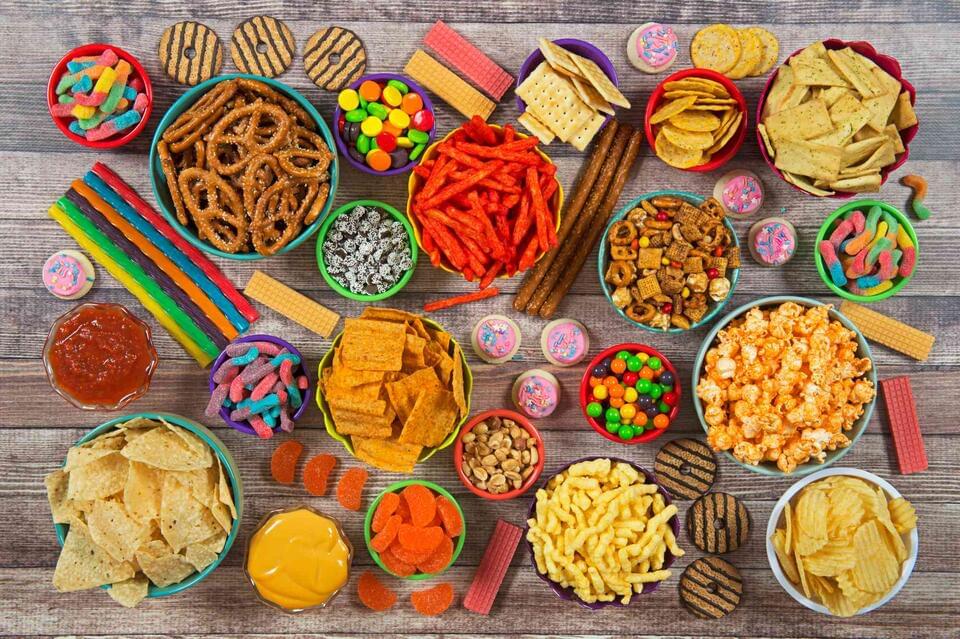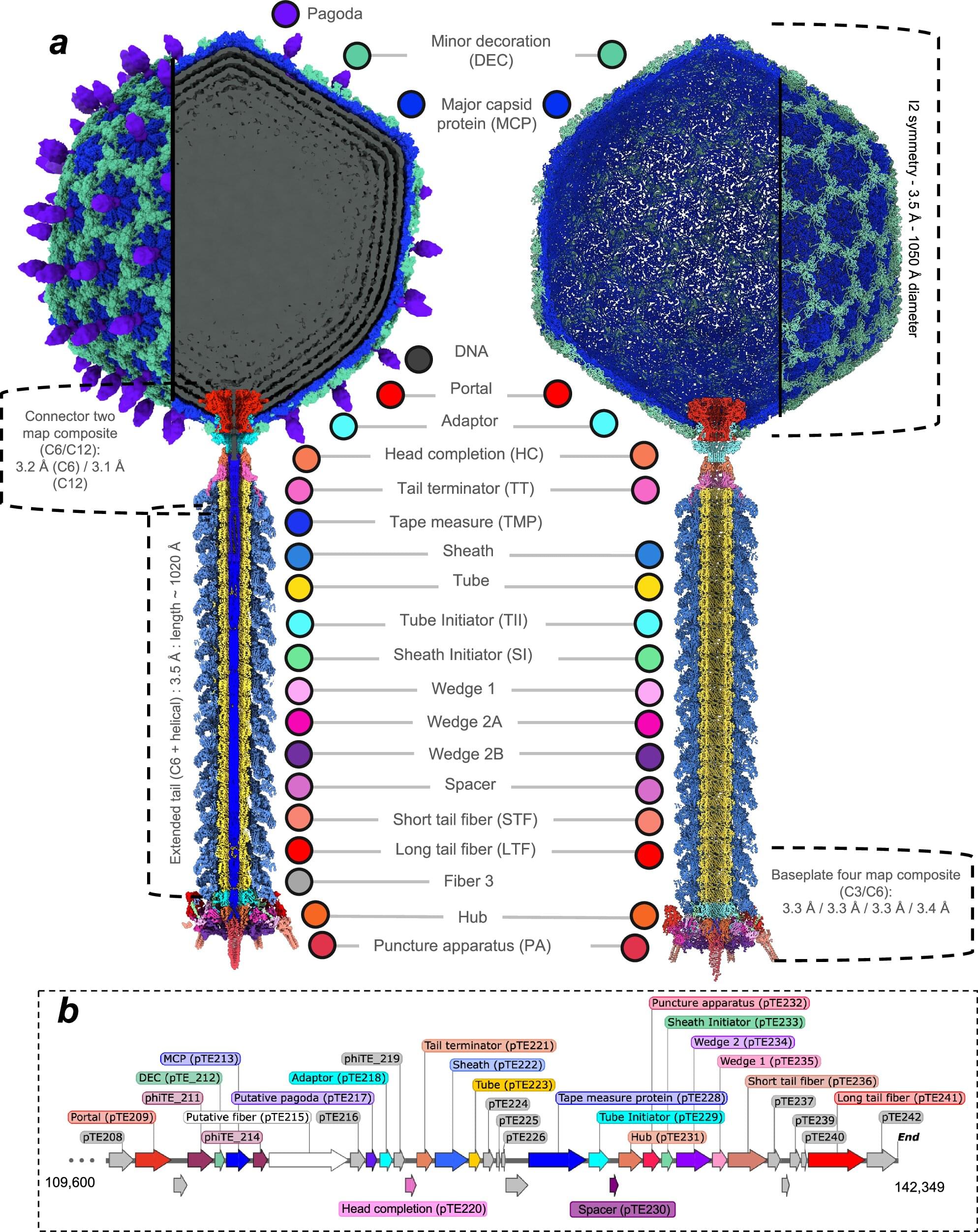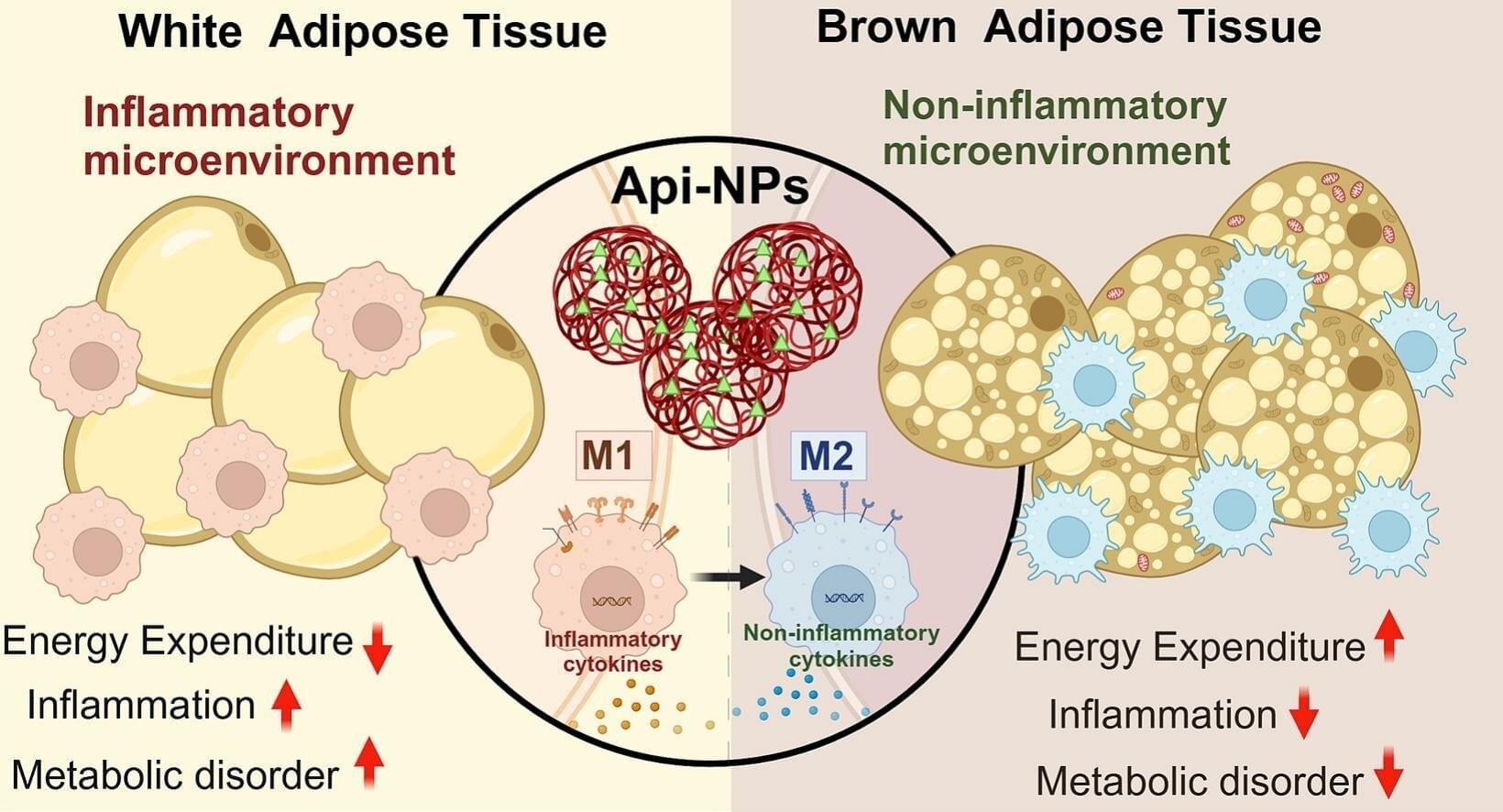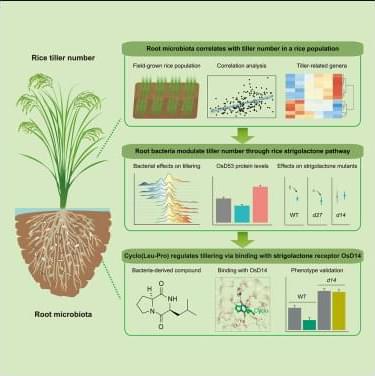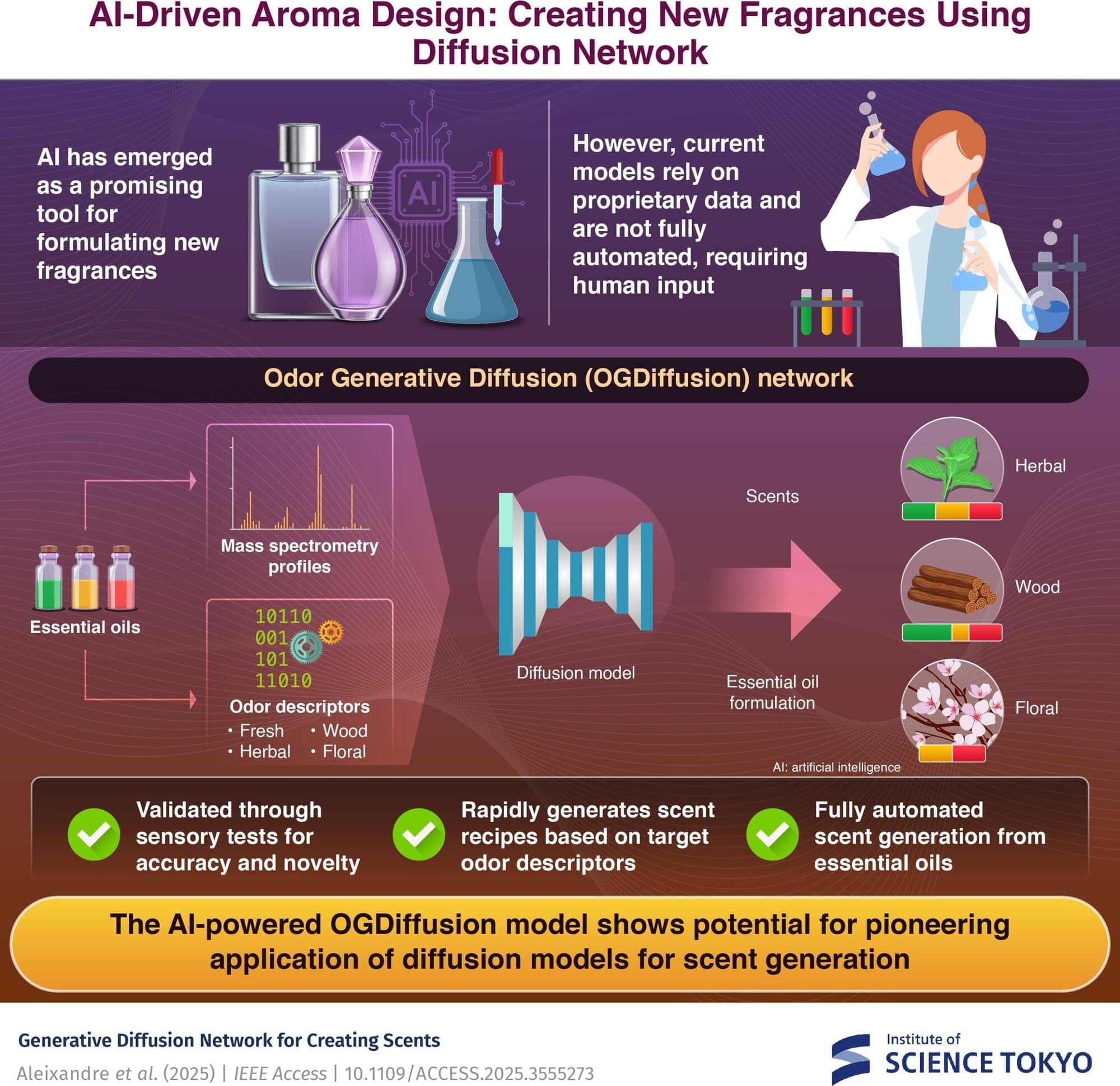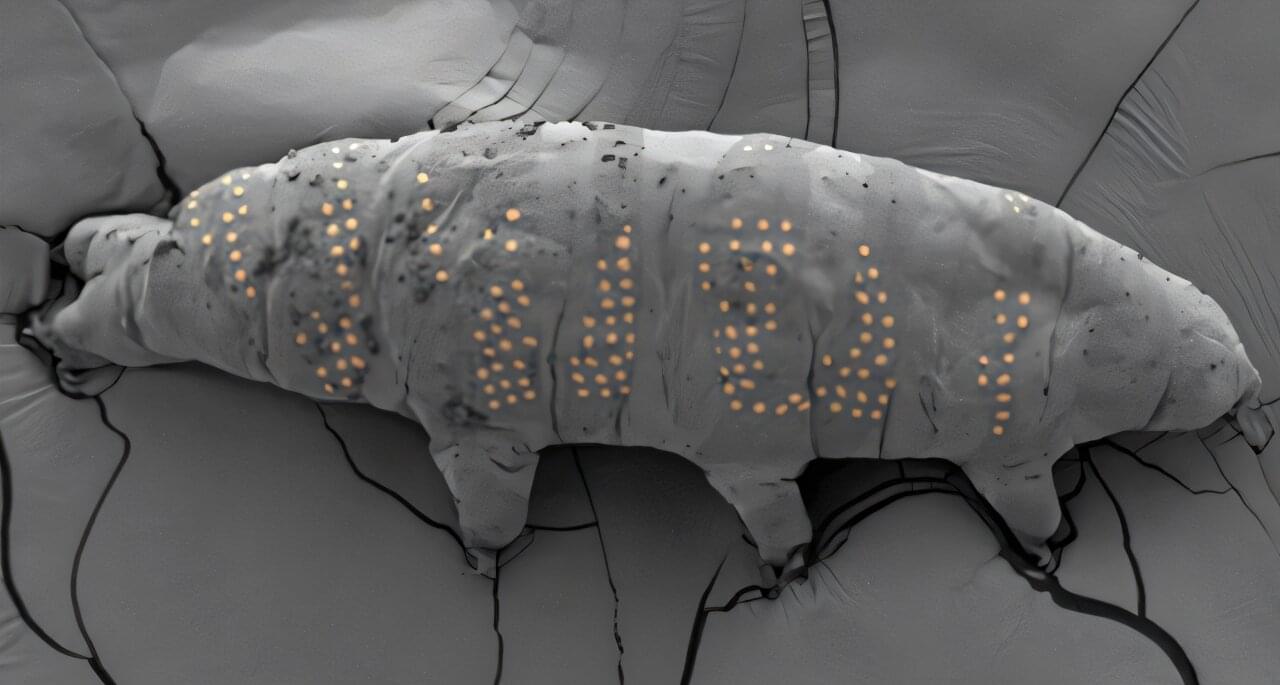With “each 10% increase in UPF contribution to total energy intake, there is a corresponding 2.7% rise in the risk of all-cause mortality,” the study says
Category: food – Page 2
Phthalates, which are found in cosmetics, food packaging and other common household plastics, are linked to early death from heart disease, a new study said.
Plants are susceptible to a wide range of pathogens. For the common potato plant, one such threat is Pectobacterium atrosepticum, a bacterium that causes stems to blacken, tissues to decay, and often leads to plant death, resulting in significant agricultural losses each year.
In 2012, researchers isolated a new virus that infects and kills this bacterium—a bacteriophage named φTE (phiTE). Now, for the first time, scientists have uncovered the atomic structure of φTE, revealing a possible mechanism of infection that may be more complex than previously thought.
The study, published earlier this month in Nature Communications, is the result of a multidisciplinary collaboration between researchers from the Okinawa Institute of Science and Technology (OIST) and the University of Otago. It brings together expertise across several fields, including virology, structural biology, molecular genetics, protein engineering, biochemistry, and biophysics.
Scientists at the Terasaki Institute for Biomedical Innovation, in collaboration with the University of Maryland School of Pharmacy, have developed a new nanoparticle therapy that tackles obesity through two complementary mechanisms: converting energy-storing white fat into calorie-burning beige fat while simultaneously reducing obesity-related inflammation.
Their findings, published in the Journal of Controlled Release, are detailed in an article titled “Apigenin-loaded nanoparticles for obesity intervention through immunomodulation and adipocyte browning.” This innovative approach addresses key limitations of current obesity treatments by precisely targeting adipose tissue with apigenin-loaded nanoparticles—enhancing therapeutic effects while minimizing potential side effects.
The research team, led by Dr. Alireza Hassani Najafabadi and Dr. Ryan M. Pearson, engineered specialized PLGA nanoparticles to deliver the natural compound apigenin directly to fat tissue. This targeted delivery system ensures optimal therapeutic effects while minimizing potential side effects throughout the body.
The root-associated bacterium Exiguobacterium R2567 regulates tiller number by producing cyclo(Leu-Pro), which activates the rice strigolactone signaling pathway.
Strawberry fields forever will exist for the in-demand fruit, but the laborers who do the backbreaking work of harvesting them might continue to dwindle. While raised, high-bed cultivation somewhat eases the manual labor, the need for robots to help harvest strawberries, tomatoes, and other such produce is apparent.
As a first step, Osaka Metropolitan University Assistant Professor Takuya Fujinaga has developed an algorithm for robots to autonomously drive in two modes: moving to a pre-designated destination and moving alongside raised cultivation beds. The Graduate School of Engineering researcher experimented with an agricultural robot that utilizes lidar point cloud data to map the environment.
Official website for Osaka Metropolitan University. Established in 2022 through the merger of Osaka City University and Osaka Prefecture University.
Should you step away from the chicken wings?
For years, the conventional wisdom has been to swap out red meat for white meats like chicken and poultry to help reduce health risks like increased cholesterol, cancer, and inflammation —not to mention get a more budget-friendly protein source. But a new study links eating chicken and other poultry with a significantly increased risk of dying from gastrointestinal cancer and all other causes.
But before you put down the chicken—or roll your eyes and get back to your chicken Caesar—check out the details of the study, and what a dietitian says you should do if you’re concerned.
Reducing high blood pressure substantially lowers the risk of dementia and cognitive impairment without dementia, according to the results of a phase 3 clinical trial involving almost 34,000 patients, published in Nature Medicine. These findings highlight the potential importance of widespread adoption of more intensive blood pressure control among patients with hypertension to reduce the global disease burden of dementia.
It is estimated that the global number of people with dementia will rise from 57.4 million in 2019 to 152.8 million by 2050, with the greatest impact being in low-to middle-income countries. Previous research suggests that lifestyle interventions, such as eating a healthy diet and exercising regularly, could be the most effective way to reduce the growing global incidence of dementia.
Research has also found that people with untreated hypertension have a 42% greater risk of developing dementia in their lifetime than healthy study participants. However, only a few randomized controlled trials have tested the effect of medications that reduce blood pressure on the risk of dementia, and none have looked at it as a primary trial endpoint.
Addressing the challenges of fragrance design, researchers at the Institute of Science Tokyo (Science Tokyo) have developed an AI model that can automate the creation of new fragrances based on user-defined scent descriptors. The model uses mass spectrometry profiles of essential oils and corresponding odor descriptors to generate essential oil blends for new scents.
This advance could be a game-changer for the fragrance industry, moving beyond trial-and-error to enable rapid and scalable fragrance production. The findings are published in IEEE Access.
Designing new fragrances is crucial in industries like perfumery, food, and home products, where scent significantly influences the overall experience of these products. However, traditional fragrance creation can be time-consuming and often depends on the skill and expertise of specialized perfumers. The process is typically challenging and labor-intensive, requiring numerous trial-and-error attempts to achieve the desired scent.
If you haven’t heard of a tardigrade before, prepare to be wowed. These clumsy, eight-legged creatures, nicknamed water bears, are about half a millimeter long and can survive practically anything: freezing temperatures, near starvation, high pressure, radiation exposure, outer space and more. Researchers reporting in the journal Nano Letters took advantage of the tardigrade’s nearly indestructible nature and gave the critters tiny “tattoos” to test a microfabrication technique to build microscopic, biocompatible devices.
“Through this technology, we’re not just creating micro-tattoos on tardigrades—we’re extending this capability to various living organisms, including bacteria,” explains Ding Zhao, a co-author of the paper.
Microfabrication has revolutionized electronics and photonics, creating micro-and nanoscale devices ranging from microprocessors and solar cells to biosensors that detect food contamination or cancerous cells. But the technology could also advance medicine and biomedical engineering, if researchers can adapt microfabrication techniques to make them compatible with the biological realm.
